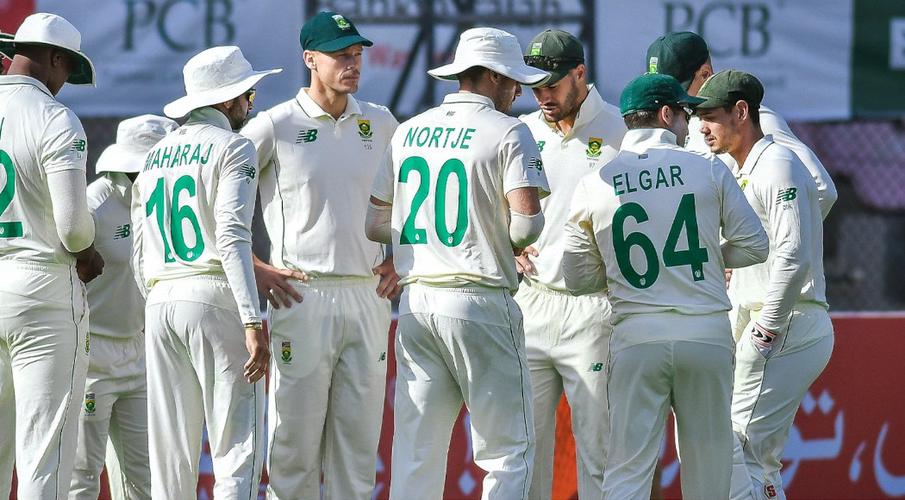The next 10 months will tell us exactly where the Proteas are as a Test side, writes RYAN VREDE.
The Proteas have among the most demanding schedules of any Test nation in this period. After the India series, starting in a fortnight, they travel to face world champions New Zealand in two Tests in February, and they have a three-Test series in England in August and September.
That is the type of schedule that reveals just where a team sits in the pecking order of Test cricket. It could crush the Proteas. It could also reveal them as being among the format’s elite.
On Tuesday, the Proteas announced a Test squad loaded with talent. But that talent is yet to translate into consistent performances.
They have a 50% win record under head coach Mark Boucher (five wins in 10 Tests). Six of those Tests have been played in South Africa, and two against a Sri Lanka side crippled by injuries. In this context, the record is unflattering at best.
A series against World Test Championship finalists India will be a stern examination of a side that is yet to establish an identity and tactical philosophy. The building blocks for success are there; how Boucher and his team construct them remains to be seen.
They have to address batting deficiencies as a priority. The team has scored over 300 just thrice in 20 innings. Two of these 300-plus scores came against a Sri Lanka bowling unit without most of their key bowlers. The breakdown of the remainder of the team’s batting totals reads:
- 0-99 runs: 1 (chased 67 to win without losing a wicket)
- 100-149 runs: 0
- 150-199 runs: 3
- 200-249 runs: 7
- 250-299 runs: 6
India, New Zealand and England have world-class bowlers who are capable of troubling the game’s pre-eminent batters, let alone those in the process of finding a method that drives consistency of performance.
While players are primarily responsible for their success, the Proteas coaching staff are tasked with ensuring the players in this category progress sufficiently in this facet of the game.
Temba Bavuma is one such player. The Proteas Test vice-captain has scored just one Test century (January 2016) in 44 matches. There has been an improvement in the last 10 matches, through which he averages just shy of 37. In this period, he looked more organised, technically and mentally sound than he has at any point in his career, which bodes well for the Proteas.
The team will also need Wiaan Mulder to start translating his talent into performance with the bat. The selectors have backed him for the all-important No 7 role, but the returns have largely been disappointing (he averages 15.88 after nine innings). Twenty-one-year-old all-rounder Marco Jansen has been included in the Test squad and Mulder will be acutely aware of his potential and prowess. He averages 63 in the current series against India A.
There have been other notable performers with the bat in that series, Sarel Erwee, Tony De Zorzi and Khaya Zondo among them.
Finally, there has to be a better contribution from the tail. This is a defining characteristic of elite Test sides, and the Proteas must wring every bit of batting potential out of Kagiso Rabada and Keshav Maharaj, in particular.
The bowling department looks stacked with quality and potential, and this should be a point of great encouragement going into the Test series against the aforementioned trio.
Rabada, Maharaj and Anrich Nortje are among the world’s best Test bowlers, and they will form the foundation of the Proteas bowling challenge. A second spinner (should they decide to go this route) and third seamer spots are up for grabs. Left-arm spinner George Linde has bowled well when granted opportunities and his batting enhances his appeal, while Senuran Muthusamy, included in the squad for the first time, has been impressive for SA A.
There is also no shortage of quality options for the third seamer spot, which is currently held by Lungi Ngidi. Lutho Sipamla took a five-for for SA A against India A in Bloemfontein on Wednesday, Sisanda Magala has been strong domestically, Glenton Stuurman is improving with experience and Duanne Olivier, the leading wicket-taker in four-day domestic cricket this season, is available after his Kolpak status ended. Jansen offers them a left-arm bowling option and would deepen their batting.
The next 10 months will be tremendously challenging for this group of players and the coaching staff, but there is no lack of talent that can be mined to the team’s advantage. Boucher and co must not be allowed to claim that, or that the group is inexperienced. Neither of those things is true.
Three years into the job, Boucher must be held to a higher standard than he has been by his friends in the media. When we assess this team at the end of September 2022, it can’t have stagnated.
It must have closed the gap between itself and the three top teams it faced in that period. Anything less should be considered a failure.







